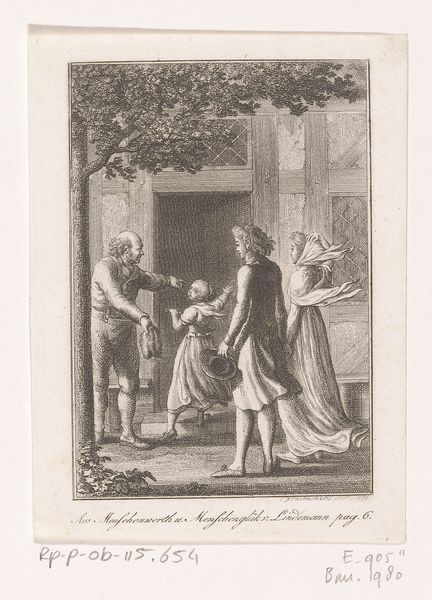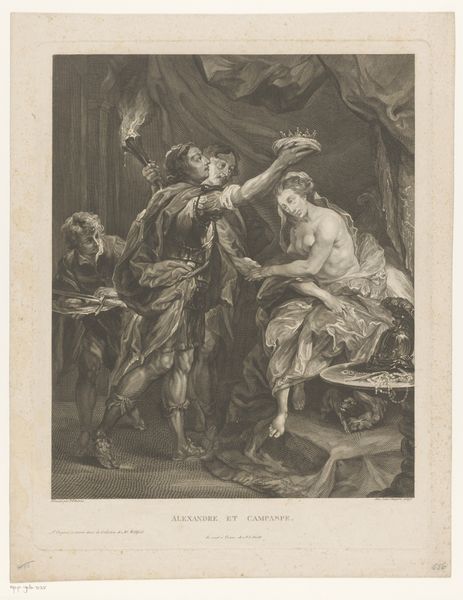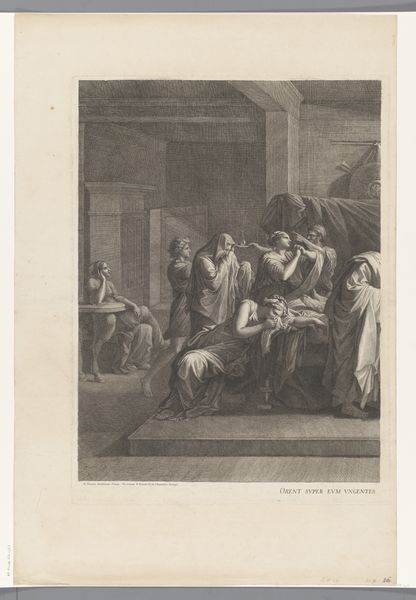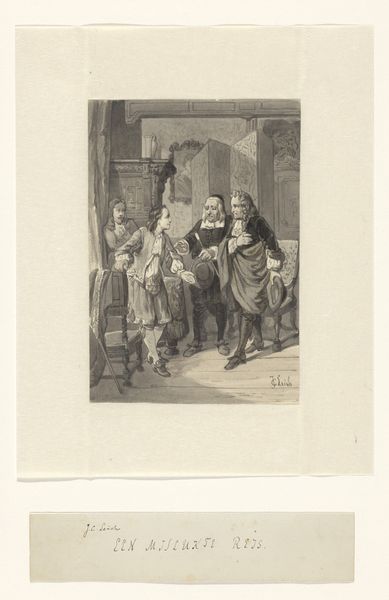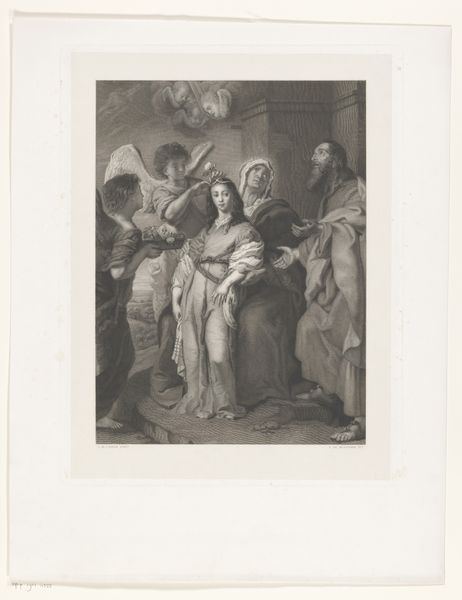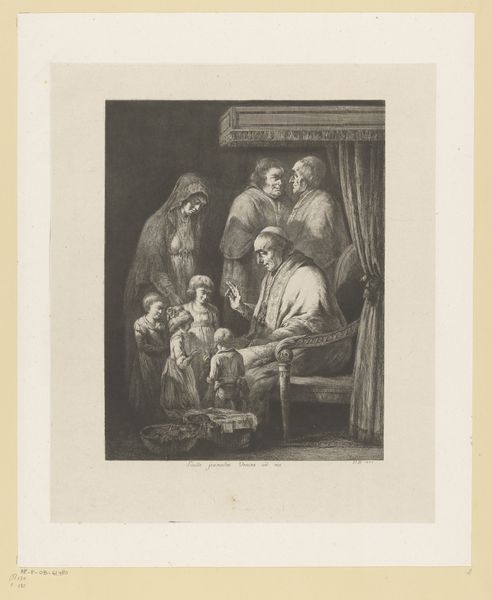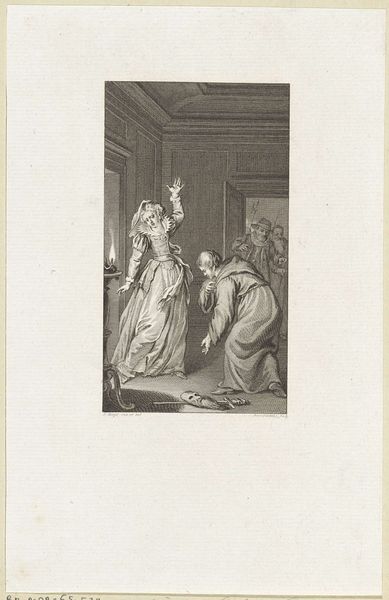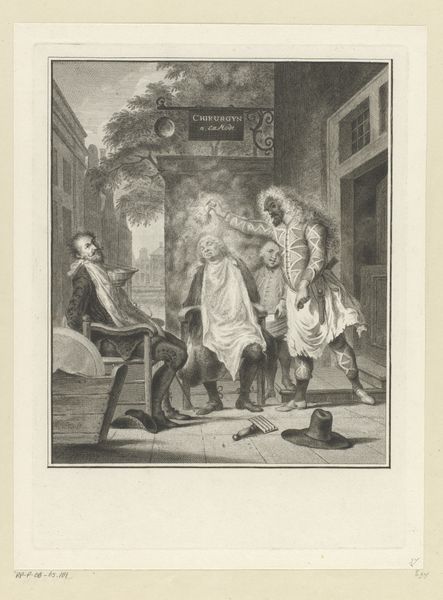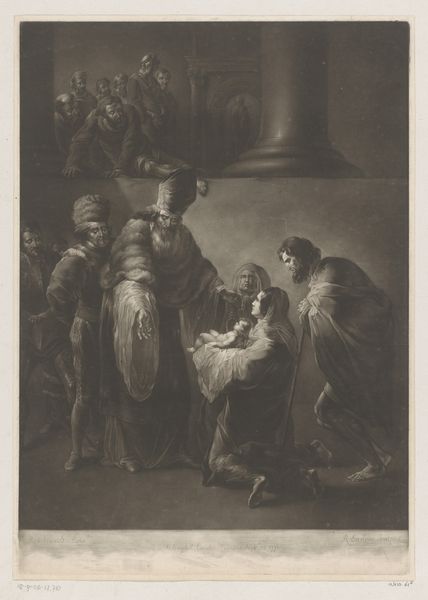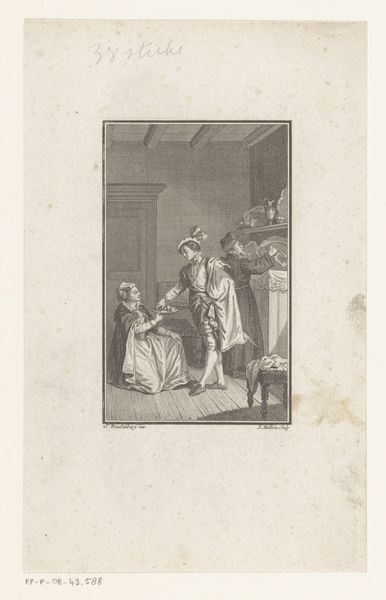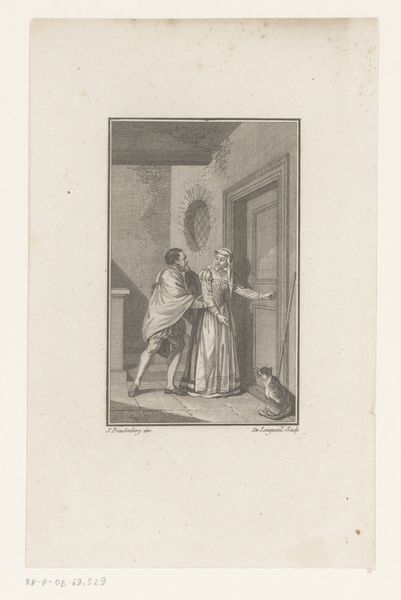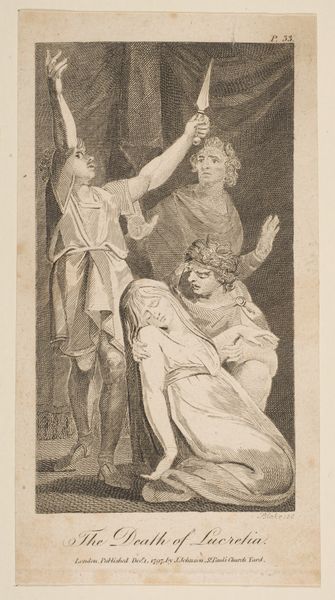
Dimensions: height 890 mm, width 585 mm
Copyright: Rijks Museum: Open Domain
Curator: The texture of this engraving, Johann Elias Haid’s "Visitatie," dating from 1749 to 1809, feels surprisingly rich despite the limited palette. What are your immediate impressions? Editor: The contrasting darkness and light give it a dramatic intensity, almost theatrical. The figures are posed as if on a stage. Curator: Indeed. Haid’s masterful use of hatching and cross-hatching creates a range of tones, which gives the print a sense of depth. Notice how the composition directs our gaze towards the central interaction between the two women, likely Mary and Elizabeth. Editor: I'm also intrigued by the evident labour involved in crafting this image. The engraving process itself would demand rigorous precision. Do we know where Haid sourced the copper for this? Understanding its origins adds layers of meaning to its context. Curator: It is a scene brimming with symbolism. Elizabeth's advanced age emphasizes the miraculous nature of her pregnancy, mirrored by Mary’s. The positioning of the figures and their gestures also contribute to the narrative of divine blessing. Editor: The way Haid captures folds of the garments. How he transforms simple fabric into something incredibly powerful... and considering the context, was this process tied to religious devotion? Were apprentices or a collective of artisans involved? This speaks volumes to material conditions and societal impact of such engravings. Curator: These reproductive prints served as crucial vehicles for disseminating religious and historical narratives. Editor: Absolutely. This image showcases so much material culture that shaped the visual landscape of its era and influenced wider society's understanding of art creation. It is also compelling when we acknowledge the social structure and the working class connected to the prints being reproduced and dispersed. Curator: Studying it today, we not only appreciate its formal qualities, like line and tone, but also its contribution to understanding the social and spiritual fabric of its time. Editor: Yes, recognizing both the artistry of design as well as all involved to facilitate such a religious monument.
Comments
No comments
Be the first to comment and join the conversation on the ultimate creative platform.
